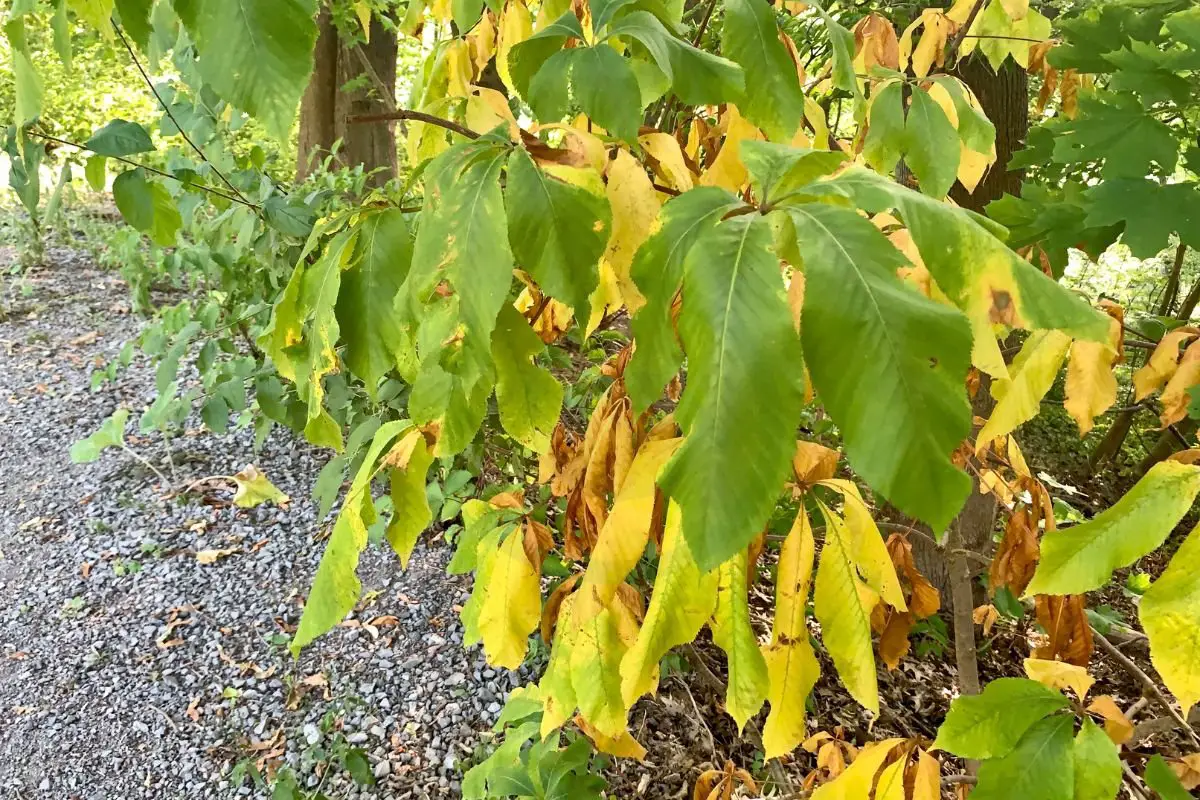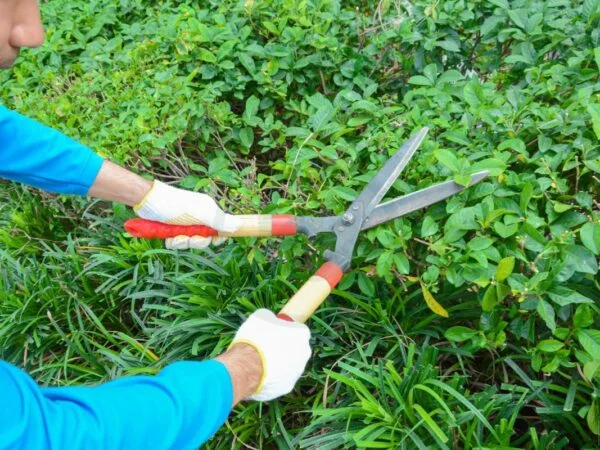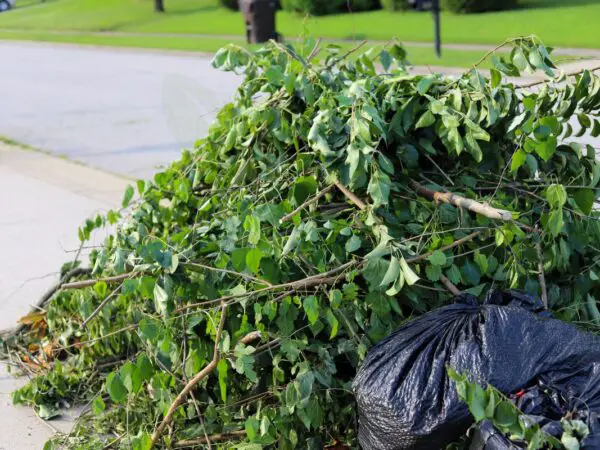Is your once vibrant lilac shrub now showing signs of distress? The contrast from its former beauty to a wilting state can be disheartening. But fret not, as this post delves into common reasons why your lilac bush might be dying and offers practical solutions to revive it. From improper pruning techniques to nutrient deficiencies, we will cover all the bases to help you restore your lilac bush to its former glory. Stay tuned for expert tips on proper care, watering schedules, and essential nutrients needed for a thriving lilac bush. Let's bring life back to your garden oasis with these valuable insights.
Key Takeaways
- Recognizing Lilac Distress: Pay attention to signs like wilting leaves or lack of blooms to identify if your lilac bush is in distress.
- Initial Care Steps: Provide immediate care by watering the plant properly and ensuring it gets adequate sunlight.
- Pruning Strategies: Regular pruning can help maintain the health and shape of your lilac bush.
- We Recommend Fertilization: Consider fertilizing your lilac bush to provide essential nutrients for growth and recovery.
- Pest Control: Monitor for pests and take necessary steps to control infestations that might be affecting your lilac bush.
- We Recommend Mulching: Mulching can help retain moisture, regulate soil temperature, and prevent weed growth around your lilac bush.
Recognizing Lilac Distress
Visual Signs
Observing wilting leaves is a key indicator of distress in lilacs. This can signal underlying issues affecting the plant's health.
Sparse blooms on a lilac bush are a clear sign of poor health, potentially caused by various factors such as nutrient deficiencies or diseases.
Yellowing or browning of leaves should not be ignored, as it could point towards stress or disease impacting the lilac bush.
Growth Patterns
Monitoring for stunted growth or the absence of new shoots is crucial in identifying distress in lilac bushes. This may indicate nutrient deficiencies or root problems.
Noting any irregular growth patterns, such as leggy branches, can provide insights into the overall health of the lilac bush and potential issues it may be facing.
Keeping an eye out for slow overall growth in a lilac bush is essential, as it could signify underlying problems that need to be addressed promptly.
Leaf Health
Inspecting for curled or distorted leaves is important, as this can be a sign of pests infestation or diseases affecting the lilac bush.
Watching for spots or discoloration on the leaves indicates potential fungal infections or other leaf diseases that require attention.
Checking for premature leaf drop is crucial, as it may suggest environmental stressors, improper care, or diseases affecting the lilac bush.
Initial Care Steps
Watering Techniques
Adjust watering frequency based on soil moisture. Ensure the soil is moist but not waterlogged to support healthy lilac growth. Water deeply, allowing the roots to access moisture at lower levels.
Avoid overhead watering to prevent leaf diseases that thrive in wet conditions. Instead, focus on directing water towards the base of the lilac bush, ensuring the roots receive adequate hydration.
Soil Assessment
Test soil pH levels using a simple testing kit available at garden centers or online. Lilacs prefer slightly acidic soil with a pH range between 6.0 and 7.0 for optimal growth and blooming.
Check for signs of compacted soil, which can restrict root development and nutrient absorption. Loosen compacted areas gently with a gardening fork to improve aeration and drainage.
Inspect the area around the lilac bush for any signs of poor drainage, such as water pooling after rain or irrigation. Poor drainage can lead to root rot and other issues affecting the overall health of the plant.
Pruning Strategies
When to Prune
Prune lilac bushes in late winter or early spring to encourage new growth and vibrant blooms. Removing dead or diseased branches promptly helps maintain the plant's health. Avoid pruning during the blooming season to prevent disrupting the flowering process.
How to Prune
Use sharp, clean tools when pruning lilac bushes to ensure precise cuts that promote healing. Cut at a 45-degree angle just above a bud to stimulate new growth effectively. Removing crossing branches not only enhances the plant's appearance but also improves air circulation around it.
Step 1: Inspect Roots
Identifying Root Issues
Inspect the entire plant specimen for signs of distress by focusing on the roots. Check for any discoloration, which could indicate root rot, a common issue affecting lilac bushes. Gently remove the plant from the soil to examine the roots closely.
Look for girdling roots, which are roots that wrap around the base of the plant and can restrict its growth. These roots essentially strangle the plant by impeding nutrient uptake and water flow. If you notice any girdling roots, carefully prune them to alleviate pressure on the lilac bush.
Addressing root issues promptly is crucial to saving your lilac bush from further decline. By identifying and resolving root problems early on, you can promote healthier root growth and overall plant vitality. Remember that healthy roots are essential for a thriving lilac bush.
Step 2: Adjust Watering
Proper Hydration Tips
Proper hydration is crucial for lilac bushes to thrive. Water deeply but infrequently, allowing the soil to dry out slightly between watering sessions. This method encourages deep root growth, making the plant more resilient to drought conditions.
Mulching around the base of the lilac bush helps retain soil moisture, preventing rapid evaporation and maintaining a consistent level of hydration. Organic mulches like wood chips or bark also contribute nutrients to the soil as they decompose, benefiting the plant's overall health.
During hot and dry periods, it's essential to adjust your watering schedule accordingly. Monitor the soil moisture levels by checking a few inches below the surface. If the soil feels dry, it's time to water. Avoid overwatering, as this can lead to root rot and other issues.
Incorporate these proper hydration tips into your gardening routine to ensure your lilac bush receives adequate moisture without being overwatered. Remember that each plant has unique watering needs based on factors like soil type, weather conditions, and sun exposure.
We Recommend: Fertilization
Choosing Fertilizer
When it comes to choosing fertilizer, opt for a balanced option with the right N-P-K ratio. This ensures your lilac bush receives essential nutrients like nitrogen, phosphorus, and potassium. Slow-release fertilizers are beneficial as they provide nutrients gradually, promoting long-term health. Avoid high-nitrogen fertilizers that can potentially damage the plant by encouraging excessive leaf growth.
Application Timing
Applying fertilizer at the correct time is crucial for the optimal growth of your lilac bush. In early spring, before new growth emerges, is the ideal time to fertilize. This timing supports the plant's development during its active growing season. Avoid fertilizing during the dormant season when the plant is not actively growing to prevent nutrient wastage. To enhance absorption and effectiveness, consider splitting fertilizer applications throughout the growing season.
Step 3: Soil Improvement
Enhancing Drainage
Improve soil drainage by adding organic matter. This can include compost, peat moss, or well-rotted manure. These materials help loosen the soil, allowing water to flow more freely.
Create raised beds for better water flow around the lilac bush roots. Raised beds elevate the plant roots above potential waterlogging areas, ensuring proper drainage and preventing root rot.
Avoid planting in low-lying areas prone to waterlogging. Standing water can suffocate lilac roots, leading to their decline. Choose well-draining locations to promote healthy growth.
pH Balancing
Adjust soil pH using amendments like lime. Lime raises the soil's pH level, making it less acidic. Test the soil regularly and apply lime as needed to maintain optimal pH levels.
Monitor pH levels regularly for optimal growth of lilac bushes. Aim for a slightly acidic pH level around 6.5 for healthy lilacs. This acidity level ensures nutrient availability and proper root development.
When it comes to lilac bushes, maintaining the right soil conditions is crucial for their overall health and longevity. By enhancing drainage and balancing pH levels, you can create an ideal environment for these beautiful flowering shrubs to thrive.
Step 4: Pest Control
Identifying Pests
Inspect chewed bark to detect rodent presence, a common issue causing lilac bush decline. Look for webbing or powdery residue on leaves, indicating potential pest infestation. Recognize prevalent lilac pests such as aphids and borers, detrimental to plant health.
Natural Remedies
Utilize neem oil as an effective solution against various lilac pests, ensuring plant vitality. Create a mixture of water and dish soap to deter aphids, safeguarding the lilac bush's well-being. Introduce beneficial insects like ladybugs to manage pests organically, promoting a healthy garden environment.
We Recommend: Mulching
Types of Mulch
Choose organic mulches like wood chips or straw for your lilac bush. Consider using mulch to regulate soil temperature, promoting healthy growth. Avoid overmulching to prevent root suffocation and maintain proper aeration.
Mulching Benefits
Mulch helps retain soil moisture around the lilac bush, reducing watering needs. Insulate roots from extreme temperatures by applying a layer of mulch around the base. Mulch adds nutrients to the soil as it decomposes, promoting healthy growth.
Step 5: Sunlight Optimization
Ideal Exposure
Plant lilacs in full sun to ensure they bloom abundantly. This exposure allows the plant to photosynthesize efficiently, promoting healthy growth and vibrant flowers. Without adequate sunlight, the lilac bush may struggle to thrive and produce flowers.
Ensure there is adequate air circulation around the lilac bush. Good airflow helps prevent the development of fungal diseases and promotes overall plant health. Proper spacing between plants can also aid in providing ample air circulation.
Protect the lilac bush from strong winds that can cause damage to its delicate blooms and branches. Wind can break branches, scatter petals prematurely, and stress the plant. Creating a windbreak or planting near a barrier can shield the bush from strong gusts.
Incorporate these tips into your gardening routine to optimize sunlight exposure for your lilac bush. By following these guidelines, you can create an ideal environment for your plant to flourish and showcase its beautiful blossoms.
Step 6: Revive with Pruning
Cutting Techniques
Pruning your lilac bush is crucial for its revival. Use clean, sharp pruners to make precise cuts without causing further damage. By cutting back to healthy wood, you encourage new growth and rejuvenate the plant.
Start by removing dead or damaged branches first. This allows the lilac bush to allocate resources more efficiently towards healthier parts. Proper pruning techniques are essential for promoting overall plant health and vitality.
Remember to cut at a 45-degree angle when removing branches. This angle helps facilitate water runoff and prevents water from settling on the cut surface, reducing the risk of disease. Ensure that each cut is made just above a bud or lateral branch to encourage new growth in the right direction.
Best Practices
- Prune during the dormant season: Late winter or early spring is the ideal time for pruning lilac bushes.
- Avoid over-pruning: While it's important to remove dead or damaged branches, excessive pruning can stress the plant.
- Regular maintenance: Make pruning a part of your routine garden care to keep your lilac bush healthy and vibrant.
Step 7: Preventing Bacterial Blight
Recognition and Treatment
Powdery mildew is easily identified by its distinct white powdery appearance on lilac leaves. This fungal disease can weaken the plant if left untreated. To combat fungal diseases effectively, treat them promptly with suitable fungicides available at garden centers. By addressing pest issues with targeted treatments, you can protect your lilac bush from further damage.
Prevention Strategies
To prevent the spread of diseases like bacterial blight, it's crucial to implement good garden hygiene practices. Regularly clean up fallen leaves and debris around the lilac bush to reduce the chances of infection. Another effective strategy is to encourage beneficial insects in your garden. These insects act as natural pest controllers, keeping harmful pests at bay without the need for chemical intervention.
Monitoring the health of your lilac bush regularly is key to catching any potential issues early on. By inspecting the leaves, stems, and flowers frequently, you can detect signs of disease or pest infestations before they escalate. Early intervention is often the most effective way to prevent bacterial blight and other problems from affecting your lilac bush.
Final Remarks
By following the steps outlined above, you can effectively address the distress your lilac bush is facing. Inspecting the roots, adjusting watering habits, and optimizing sunlight exposure are crucial in reviving your plant. Prioritizing soil improvement, pest control, and regular pruning can significantly contribute to its recovery. Remember that prevention is key; implementing these practices proactively can help prevent future issues and maintain the health of your lilac bush.
Take action now to implement these strategies and give your lilac bush the care it needs to thrive. Your attentiveness and effort will not only revive your plant but also ensure its long-term health and vitality. Keep up with these maintenance practices to enjoy a flourishing and vibrant lilac bush in your garden.
Frequently Asked Questions
How can I tell if my lilac bush is in distress?
Inspect the leaves for discoloration or wilting, check for unusual growth patterns, and observe any signs of pests or diseases. If the plant looks unhealthy or has stunted growth, it might be experiencing distress.
What initial care steps should I take for a dying lilac bush?
Ensure proper watering by checking soil moisture, prune dead or diseased branches, and inspect the roots for any signs of damage. These steps can help address immediate issues and provide a starting point for revival.
When should I fertilize my struggling lilac bush?
Fertilize your lilac bush in early spring before new growth begins. Choose a balanced fertilizer specifically formulated for flowering shrubs to provide essential nutrients that can promote healthy growth and blooming.
How can mulching help revive a dying lilac bush?
Mulching helps retain soil moisture, regulate temperature, suppress weed growth, and improve soil structure. Applying mulch around the base of the lilac bush can create optimal conditions for root development and overall plant health.
What are some effective pruning strategies to revive a struggling lilac bush?
Prune out dead or diseased branches, remove crossing or crowded stems, and shape the plant to improve air circulation and sunlight exposure. Proper pruning techniques can rejuvenate the lilac bush and stimulate new growth.
Image Source: Paid image from CANVA





